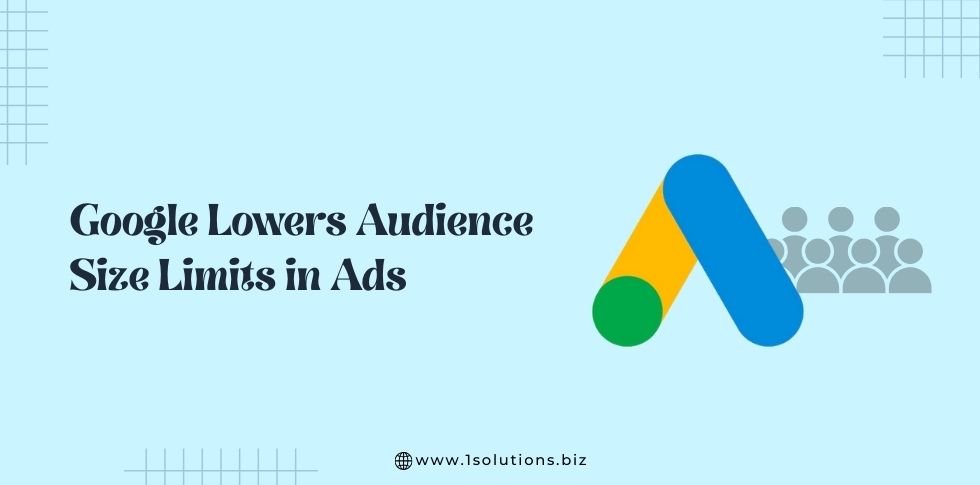Google’s search algorithm is in a state of constant evolution. Each year brings new updates, systems, and enhancements that reshape the way websites are ranked, discovered, and evaluated. For digital marketers, SEO professionals, and business owners, keeping up with these changes isn’t just helpful; it’s essential.
Enter Google MUVERA, a new and potentially transformative system that’s starting to attract significant attention within the search and tech communities. MUVERA, short for Multi-Vector Retrieval Architecture, promises to push the boundaries of how search queries are matched with results. Instead of relying on a single vector or interpretation of a query, MUVERA allows Google to consider multiple dimensions of meaning, context, and user intent-all while maintaining high retrieval speed and efficiency.
This article will unpack everything we currently know about Google MUVERA: what it is, how it fits within Google’s existing ranking systems, and what it might mean for SEO strategy moving forward. Whether you’re managing content for a global brand or running a niche blog, understanding MUVERA is crucial to staying competitive in the evolving search landscape.
What Is Google MUVERA?
Google MUVERA stands for Multi-Vector Retrieval Architecture. At its core, MUVERA is a retrieval system designed to make multi-vector search as fast and scalable as traditional single-vector retrieval. This means that Google can now incorporate a more nuanced understanding of queries and documents-matching them across several semantic axes-without sacrificing the lightning-fast response time users expect.
In traditional search architectures, user queries and documents are encoded into a single vector. This vector attempts to represent all the meanings or intents behind the input in one bundled signal. While this is fast and efficient, it often misses nuance, especially in ambiguous, complex, or conversational queries.
MUVERA addresses this limitation by splitting documents into multiple semantic representations, also known as “heads.” Each of these heads captures a different dimension of what the document is about. Then, using a smart retrieval strategy, MUVERA can match a query against several document heads, greatly improving relevance.
This system is not a core algorithm update like Panda or Penguin, nor is it a content quality framework like the Helpful Content System. Instead, MUVERA is more aligned with infrastructure-level advances such as BERT, RankBrain, and Neural Matching. These are foundational systems that help Google better understand language, semantics, and context at scale.
In short, MUVERA represents a technical leap that enhances how search engines retrieve and interpret content. While it may not be something SEOs can “optimize for” directly, it significantly affects how Google identifies relevance.
Also read: Google’s March 2025 Core Update: What It Means for Your Website
Why Google Introduced MUVERA
The increasing complexity of user behavior, coupled with the explosive growth of AI-generated content, has created a more chaotic information environment. Traditional single-vector search retrieval systems struggle to keep up with:
- Multifaceted search queries
- Ambiguous intent
- Rapid content proliferation
Google introduced MUVERA to address these growing challenges. Here are some of the key drivers behind its creation:
-
Limitations of Single-Vector Systems
When a search system represents queries and documents using just one vector, it simplifies meaning into a one-size-fits-all representation. This often leads to partial matches or relevant documents being missed altogether.
For example, a query like “best compact camera for wildlife” contains multiple dimensions: form factor (compact), use case (wildlife), and preference (best). A single-vector system might miss one or more of these aspects.
-
Rise of AI-Generated and Contextually Thin Content
With the rise of generative AI, there’s a flood of new content being published online. However, much of it lacks contextual depth or intent alignment. MUVERA helps Google retrieve content that better matches the underlying meaning of a search query-even when that meaning is complex or layered.
-
Evolving Search Expectations
Today’s users expect more from Google than just keyword matches. They want answers that understand nuance, reflect their intent, and feel contextually intelligent. MUVERA is part of Google’s long-term strategy to meet those expectations.
How Google MUVERA Works: A High-Level Breakdown
While MUVERA’s architecture is complex, its core principles can be broken down into a few high-level mechanisms that influence retrieval and, by extension, rankings.
User Intent Matching
MUVERA enhances Google’s ability to decode what the user really wants. Instead of relying solely on keyword overlap, it maps the query against multiple document dimensions to find results that align better with inferred intent. This means content that answers the “why” behind a query may perform better than content that simply matches the words.
Content Authenticity & Contextual Depth
Because MUVERA matches across several dimensions, surface-level content is less likely to perform well. It favors material that explores topics deeply, offers unique perspectives, and uses contextual language. Thin, repetitive, or AI-spun content is more easily filtered out.
Entity Recognition & Semantic Analysis
MUVERA builds on Google’s existing entity recognition systems to understand how different concepts relate to each other in a document. It can connect people, places, topics, and ideas across different content heads, improving semantic relevance even if exact keywords don’t align.
Behavioral Signal Processing
Although not exclusive to MUVERA, user behavior metrics such as dwell time, click-through rate, and bounce rate become more significant when determining how well the retrieved content satisfies intent. MUVERA’s improvements in relevance likely boost these behavioral signals naturally, which in turn helps rankings.
AI & Machine Learning Integration
MUVERA is underpinned by advanced ML systems trained to encode documents and queries into multiple heads or representations. These systems are continuously updated to adapt to new language patterns, usage behavior, and content types, ensuring ongoing learning and improvement.
How Google MUVERA Affects SEO and Website Rankings
The introduction of MUVERA impacts SEO in several important ways, especially in how “quality content” is interpreted by search engines.
- Depth Over Breadth
Sites that prioritize deep, focused content on a specific topic are likely to benefit. Broad but shallow content may struggle, as MUVERA looks for multiple meaningful dimensions of relevance.
- Context Matters More Than Ever
Contextual relationships between ideas, keywords, and subtopics help form better multi-vector representations. Pages with strong semantic cohesion are more likely to rank than those with keyword lists or disconnected sections.
- Visibility Shifts for Different Content Types
-
- Blog and editorial content that provides genuine insights may rise in rankings.
- E-commerce pages with thin descriptions may see visibility decline.
- AI-generated content that lacks depth or semantic richness is likely to be deprioritized.
- Keyword-Centric Practices Are Less Effective
MUVERA continues the trend of moving beyond keyword matching. Overuse of exact-match terms, keyword stuffing, and outdated keyword targeting tactics are increasingly ineffective-and may even signal low relevance.
- Authority Alone Isn’t Enough
Even high-authority sites may lose visibility if their content lacks contextual richness or misaligns with nuanced user intent. Conversely, niche sites that demonstrate subject-matter expertise can gain ground.
Also read: Google E-E-A-T Content Quality Checklist For Higher Rankings
Who Will Be Most Affected by Google MUVERA?
Not every site will feel MUVERA’s impact equally. Here are some types of websites that are most likely to be affected:
- AI-Generated Content Publishers
Sites publishing large volumes of generative AI content without editorial oversight or added value will struggle. MUVERA is built to recognize authenticity and depth, which AI often lacks.
- Thin Content Affiliates
Affiliate sites with minimal original content, basic product descriptions, or unhelpful listicles may find it harder to rank. MUVERA favors in-depth comparisons, original commentary, and contextual expertise.
- Over-Optimized Local SEO Sites
Local business sites stuffed with geo-keywords but offering little real content may see a decline in visibility. Google is now better at evaluating intent fulfillment, not just location mentions.
- Outdated Blogs
Blogs that haven’t been updated in years and contain surface-level coverage of topics could lose ground to newer content that reflects modern usage and terminology.
Warning Signs to Watch:
- Drops in traffic for long-tail or intent-specific keywords
- Decline in engagement metrics (lower dwell time, higher bounce)
- Ranking volatility on pages with similar keyword but different content depth
How to Optimize for Google MUVERA
To align with MUVERA’s criteria, focus on building content and a site structure that emphasizes depth, clarity, and real value. Here’s a checklist of best practices:
Focus on content depth and originality:
Create comprehensive content that covers all facets of a topic. Go beyond surface answers; include detailed explanations, examples, visuals, and up-to-date data. Think like an answer-builder: if someone asks a question, ensure your content addresses every part of that question. Unique insights, first-hand experience, and clear demonstrations of expertise will help (as MUVERA rewards “originality & insight”). Avoid duplicating or boilerplate text – instead, add value that only your site can provide.
Audit for intent alignment:
Review your target keywords and the pages you rank for. Make sure each page truly matches the user’s intent behind those queries. If a query is navigational (looking for a brand) or transactional, provide clear answers or helpful product info. If a query is informational, your content should be taught or explained. As one SEO analysis puts it, keyword matching alone isn’t enough – you must anticipate what the user needs. If your content doesn’t answer that question, rewrite it. Use tools or search queries to see what questions people have on your topic and address them fully.
Improve internal linking with semantic relevance:
Strengthen topic clusters by linking them to related content. Use clear, descriptive anchor text that reflects how MUVERA might parse queries (i.e., using natural language phrases rather than just keywords). For example, if you have multiple guides on “mobile gardening,” link them using phrases that real users might search for. One SEO source notes that interlinking sections with anchors matching natural queries helps MUVERA understand page connections. Good internal linking helps Google’s algorithm surface entire content sets, and it lets MUVERA grasp your site’s topical breadth.
Incorporate updated, cited, and structured content:
Keep your information current and cite reputable sources when appropriate. Structured content (using clear headings, bullet points, tables, etc.) allows MUVERA to index sections individually. For instance, ensure each H2/H3 section is self-contained and answers a specific sub-topic of the page. This way, even if only one paragraph of your content matches a query, Google can lift that snippet. Also include schema markup to clarify content types, and ensure authorship or expertise is evident (bios, credentials) to support trustworthiness.
Prioritize page experience and engagement:
Even though MUVERA is retrieval-first, technical and UX factors still matter. Optimize for fast load times (especially on mobile) and good Core Web Vitals, as Google’s overall search ranking still uses these signals. Use clean HTML structure so that each section (H2, H3, lists) is parsed easily. Add descriptive alt text to images (since MUVERA can be multimodal), and make sure pages are accessible and mobile-friendly. Encourage genuine engagement by making content readable and visually appealing (images, videos, infographics). Remember, better engagement means users stay longer, which can indirectly boost how MUVERA judges your content’s relevance.
Following these guidelines aligns your site with MUVERA’s focus on intent and quality. In effect, you’re future proofing your content by emphasizing what Google ultimately wants: clear answers, expert insight, and real user satisfaction.
Myths and Misconceptions About Google MUVERA
“MUVERA Only Affects Large Sites”
False. While enterprise-scale websites may feel the shift more dramatically due to traffic volume, MUVERA applies to all indexed content.
“It’s Just Another Name for Helpful Content”
No. MUVERA is an infrastructure advancement, not a content quality system. It works behind the scenes to retrieve better results, regardless of the Helpful Content signals.
“You Can’t Optimize for MUVERA”
While you can’t optimize MUVERA directly like a traditional algorithm, you can align your content strategy to match user intent, improve semantic richness, and increase contextual relevance-which all help within MUVERA’s framework.
Frequently Asked Questions About Google MUVERA
What is Google MUVERA?
Google MUVERA stands for Multi-Vector Retrieval Architecture. It is an advanced retrieval system that allows Google to understand and match search queries across multiple semantic dimensions, leading to more relevant and nuanced search results.
How does MUVERA affect SEO?
MUVERA favors content that is in-depth, contextually rich, and aligned with user intent. Shallow or keyword-stuffed pages are less likely to perform well. SEOs should focus on content depth, semantic structure, and intent fulfillment.
Can I optimize my website for Google MUVERA?
You can’t optimize for MUVERA directly, but you can improve your content by focusing on user intent, semantic relevance, contextual depth, and engagement metrics. These align with the principles MUVERA uses to retrieve relevant content.
Is MUVERA the same as the Helpful Content Update?
No. MUVERA is a backend retrieval system that improves how Google matches queries to content. The Helpful Content Update, on the other hand, is a content quality ranking signal. They serve different purposes but can complement each other.
What types of websites are most affected by MUVERA?
Websites with thin, low-value, or AI-generated content are most affected. MUVERA rewards content that provides original insight, semantic richness, and relevance across multiple dimensions of user intent.
Tip – To know more about AISEO, read our blog- AI SEO Strategies for 2025
Conclusion
Google MUVERA represents a major shift in how search engines retrieve and evaluate content. By moving from single-vector to multi-vector retrieval, MUVERA enables a more nuanced, intent-aware, and context-rich approach to ranking.
This means that content strategy is no longer just about keywords or authority; it’s about depth, trust, context, and user satisfaction. Sites that genuinely aim to help users, explore topics thoroughly, and provide original insights will continue to win.
While the system may be complex under the hood, its real-world implication is clear: put the user first. Answer their questions, understand their needs, and structure your content with relevance in mind.
































 in India
in India